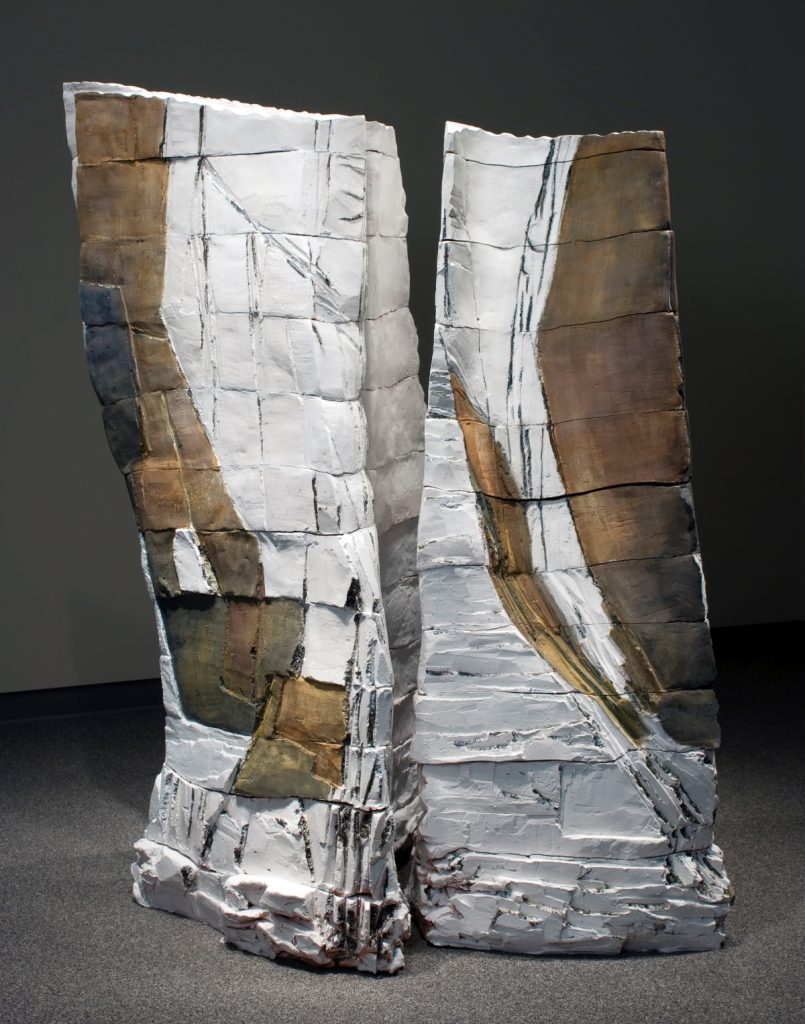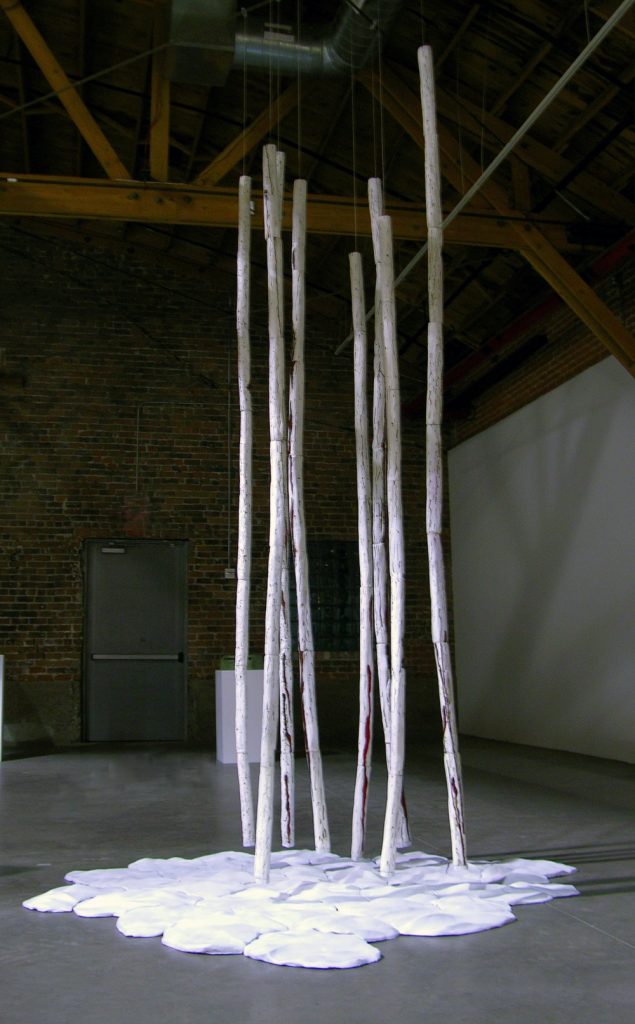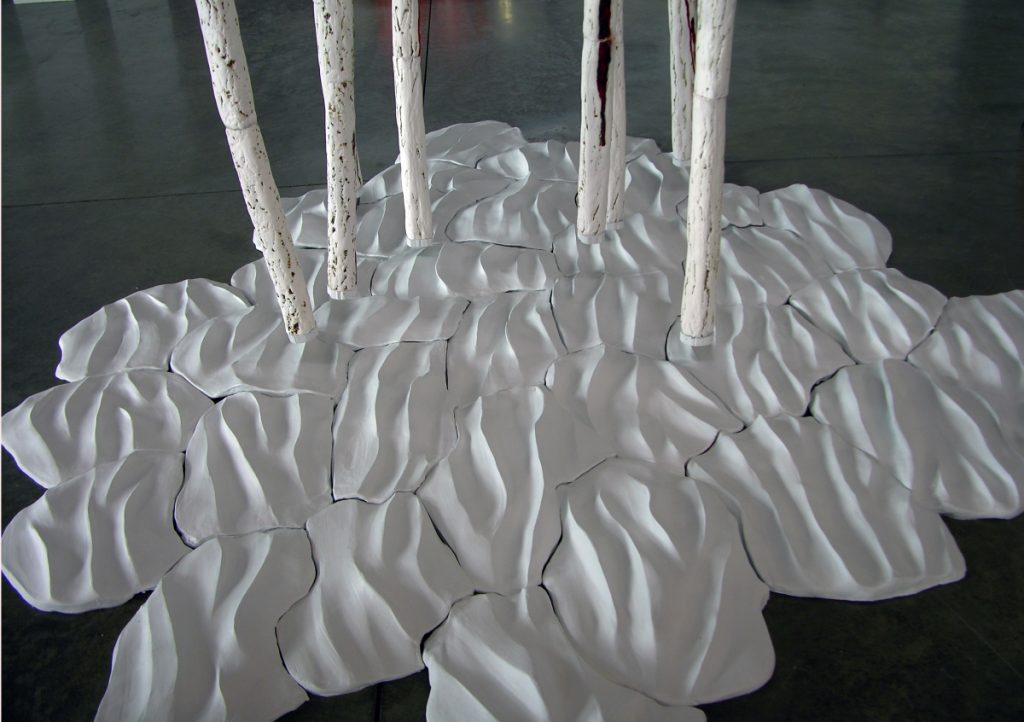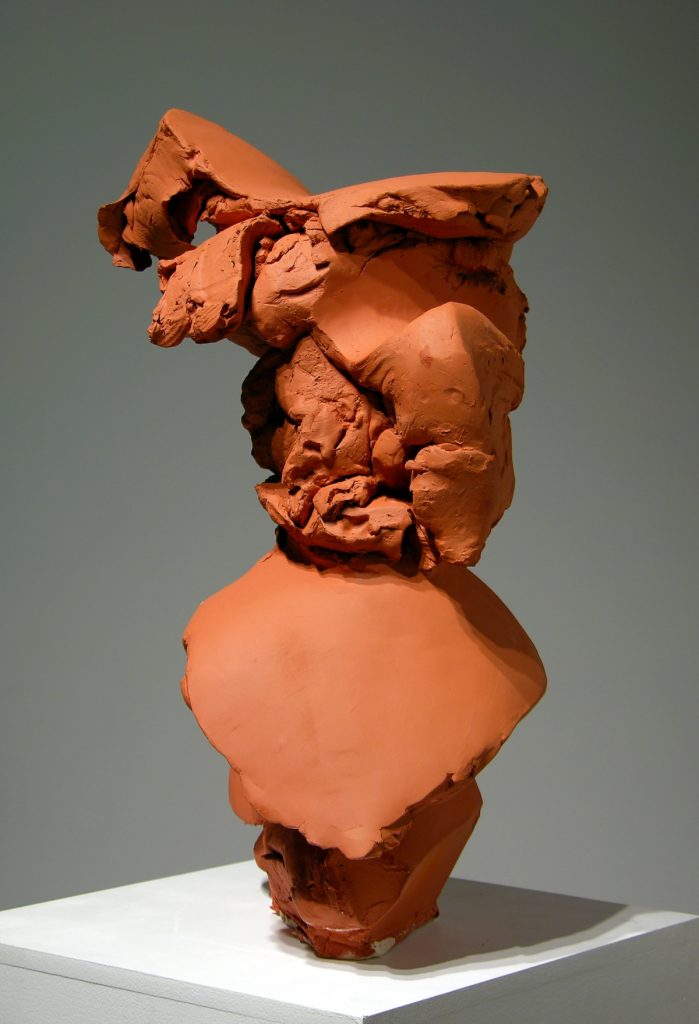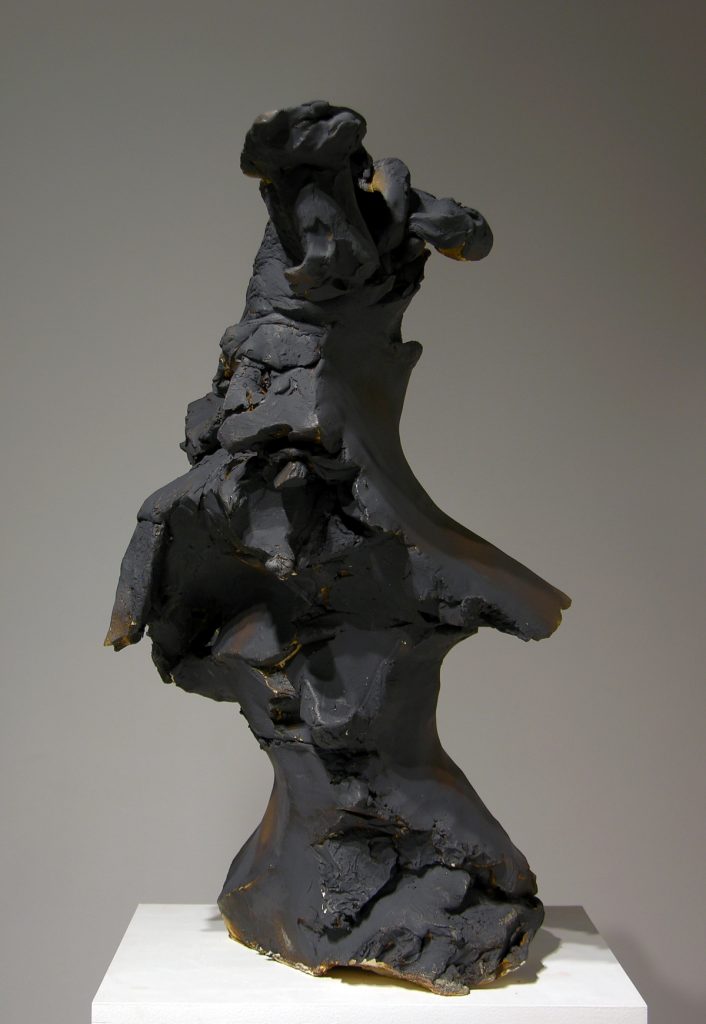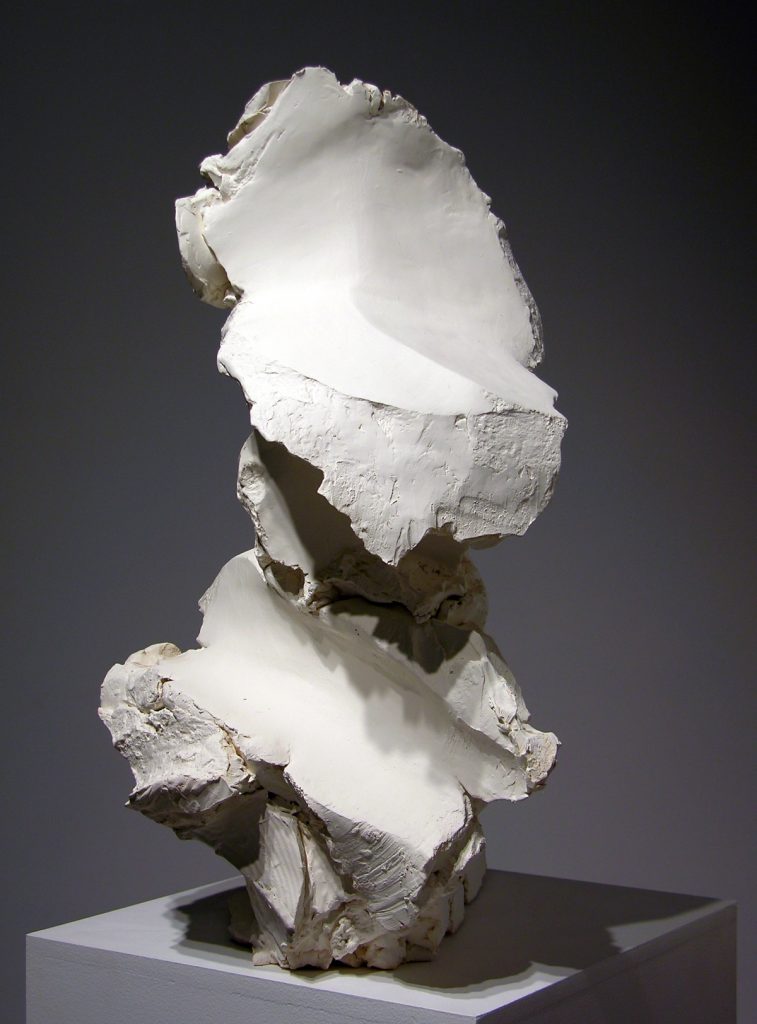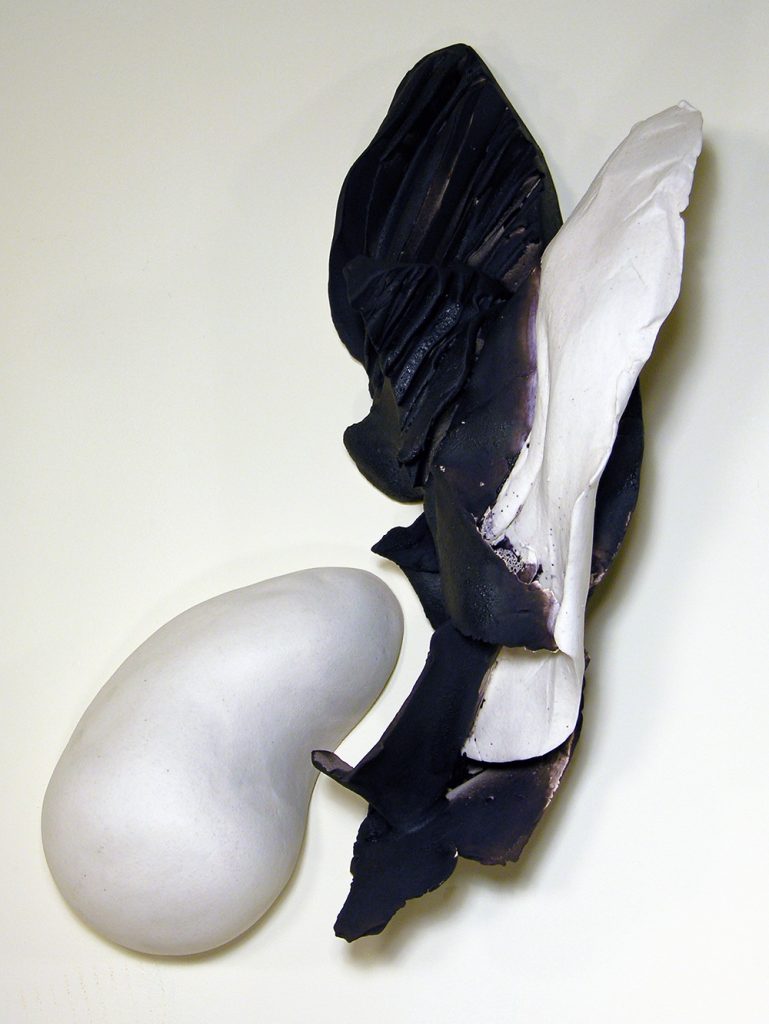You spent a great deal of time immersed in the Canadian wilderness, which has been a major influence in your work. How did the natural environment shape your identity and consequently your practice?
Initially, I had no idea that my time spent in the wilderness was going to impact my creative process. My first three years in undergraduate school were pretty lame. I had no idea what I wanted to communicate visually, and I was focused on improving my facility with a variety of materials.
A breakthrough occurred in my fourth year and began to create works that described an aesthetic inspired by the wilderness of the Canadian Shield. I spent my summer vacations in North Western Ontario on Kakagi Lake with my father, mother and brother since I was three. We would explore the lake, and portage to surrounding ones. It was a magical time; we would fish and cook on an open campfire, hike, and swim. Kakagi Lake is large, has endless islands and is very deep. It was rare to see another boat, it felt like we were all alone at the end of the world; it’s a unique place. These memories are positive ones, filled with love and shaped who I am. When I began to create pieces inspired/influenced by those memories/experiences, I felt a strong desire to capture something within the work that would describe this place. I felt a need to convey that same feeling of wonderment to the viewer. I felt this was accomplished with my first installation Dusk in Kakagi I-XV.
Do you think that it is possible to live in a human-made environment without any psychological consequences?
This is a tuff question, as I am not an environmental physiologist, but from my experiences, I know my time in the wilderness shaped who I am. The wilderness has a profound effect on the way I make my way in the world. It provides perspective on life, and its strength feeds your soul. There are many people who live in “concrete jungles” and have no interest in experiencing nature. Depending on their lifestyle, the absence of experiencing nature may have no effect on their happiness or wellbeing.
My opinion from experience: I moved from Canada to the USA, to attend graduate school in a small city in the midwest. During this time, I experienced withdrawal from a lifestyle that was no longer an option and consciously made work in response to this absence. My thesis was devoted to researching the psychological impact our natural environment has on our wellbeing. When I am unable to experience nature on a regular basis, it affects my happiness. As soon as I go for a long walk in a place far away from lights and the noise pollution, everything feels just as it should be.
I compare experiences in clay to experiences dating “the bad boy”; it’s a lot of drama, but a lot of fun.
When did you start working with ceramics?
I began working with ceramics when I was in my high school art class. At one point, we had a student teacher, and he introduced us to slip casting. I was totally blown away with the material and enjoyed working in 3D (compared to the usual drawing and painting we had done up until that point). During my second year of undergraduate school at the School of Art, at the University of Manitoba I enrolled in an introductory ceramics course. Even though I wasn’t successful and quite frustrated, I felt drawn to being able expressing myself through clay. In retrospect, I enjoyed the challenges clay presented. The material was unforgiving, but you can make anything you want clay, and when it works, it feels amazing. I compare experiences in clay to experiences dating “the bad boy”; it’s a lot of drama, but a lot of fun.
I ended up doing my undergraduate thesis in ceramics, and there were a few people that really impacted my evolution as an artist. Mariko Patterson was an instructor in the department during my fourth year, and the casual conversations that we would have in the studio lead me to working more loosely, hand building as a sculptor rather than throwing on the wheel. It was freeing. The second person that impacted on my evolution as an artist was Linda Christianson, our visiting artist during my thesis year. We had the most thoughtful conversation about my work, and she was really present. I was having a difficult time expressing what my work was about and didn’t know what was influencing/inspiring my ideas. She reached over and looked at a few images I had pinned to the wall, and turned them on their side, saying “that’s where they come from, that’s them, right there.” I ended up creating an installation of fourteen over life-size sculptures titled Dusk in Kakagi I-XV. To this day, I feel that my most successful pieces came from intuitive feelings that I followed. I had no idea what the work was about during the making process and feel that work that results from this approach is the most successful.
The surface of your work offers a visual contrast between smooth and rough areas. Can you tell us more about this contrast and choice of materials?
The visual contrast within my work comes from formal decision-making, and not wanting the pieces to be too manic. Subconsciously, forms emerge that allude to of the human figure and organs and collide with non-descriptive forms from nature, created through an approach of ripping, gouging, cutting, and smoothing the clay. I use a low fire, red clay body that I developed over time, which stands up well in a variety of outdoor climates. The clay body has an immense amount of grog (a variety of particle sizes) that helps with firing large forms with inconsistent thicknesses.
You employ memory narratives to create sculptures and installations. How does this process work? Do you create art spontaneously?
I work in a very spontaneous, intuitive approach (I don’t map out or make plans); I get an idea and execute it. Sometimes, I just get a feeling and have a vague vision of an installation or sculpture. I work with clay in a very physical manner. Traditional ceramic techniques such as slab or coil building felt very restrictive. Ever since my last few years in undergraduate school, the work has gotten bigger and bigger, not just in height, but mass.
During my first-year committee review in graduate school, I was eaten alive. I presented an installation outdoors titled Hung to Cure, based on my recent experience living in a remote community in Northern Saskatchewan. The ceramic components of this piece where slab built triangular forms, from which I cast plastic “pod-like” forms that hung in a semi-circle around them. The piece was all about these plastic pods. They were massive balloons, painted blood red, and the aftermath of painting them made my studio look like a slaughterhouse (my studio mate was a very understanding person). A result of that critique was a conversation with one of my committee members, Pete Pinnell. I expressed how limited I felt, and described how I would ultimately like to work with clay; have a large solid mound to manipulate in a “whole-body” physical approach. He asked, what was holding me back? I said, “I would have to make like, a 1000lbs of clay” and he said, so? From that day on, I began to make 1000-1500 lbs of clay every two weeks for two years. It was great.
To this day, I feel that my most successful pieces came from intuitive feelings that I followed. I had no idea what the work was about during the making process and feel that work that results from this approach is the most successful.
A few years ago, you said that you use “banal” as a tool to remind yourself that honest, soulful ideas may be mundane to some, but are fulfilling, emotional expressions of who you are. How and why did you start using this tool? Do you also apply it when deciding if a work is finished?
During my residency at The Medalta International Artists in Residence, I began to write very candid streams of consciousness pieces and post them on my website. The one titled Banal was about my graduate school thesis defense. I initially thought my graduate thesis review was an awful experience. I had worked so hard to create an installation that included several components: Burnt, Shifted, and Drift. These were major pieces, and it was an “act of god” that they survived the firing process. I had expectations that I was going to be praised for my evolution as an artist and the discussion would focus on the work in the exhibition, as well as my development as an artist over the last three years. This was not the case. One of the committee members cast a dark cloud over the entire defense, starting the discussion by saying the work was banal and had nothing to say about it other then how boring it was. I was really taken aback; the rest of the defense was a blur.
About a year later I realized that comment was an important one and thought about its meaning. It taught me how to anticipate critique, how to be more objectively critical, and to realize that the work you make is a personal journey. If you make work that is honest and meaningful, stay true to your practice and are fulfilled, and this results in work that is banal to some, then so be it, c’est la vie.
You are the Curator of Travelling Exhibitions (TREX) for the Alberta Foundation for the Arts. Tell us about this program and about the role you play.
I feel lucky to have a position in the Arts. I work at the Esplanade Arts and Heritage Centre (esplanade.ca) as the Travelling Exhibitions program manager and curator for the Southeast region of Alberta. The programs mandate is to provide every Albertan with the opportunity to enjoy visual art exhibitions in their community, supporting and promoting Alberta made art, with each show traveling for 2.5 years. These professionally curated exhibitions travel all over the province to non-traditional gallery spaces such as schools, libraries, health centers and small rural museums or galleries. Each of the four regions circulate an average of 9 unique exhibitions 12 months of the year, with an average of 60,000 visitors experiencing a TREX exhibition yearly.
Exhibitions are curated from a variety of sources, such as the 8000 piece permanent collection at the Alberta Foundation for the Arts, which showcases the creative talents of over 2000 Alberta artists. The educational components of the program aim to help the viewer to engage with the artwork beyond the decorative. It provides educational support material with each exhibition through an interpretative catalog and educators guide. It is filled with information about the history of the medium featured in the exhibition, lesson plans for visual art projects, and information about the featured artist. TREX also offers a Visiting Artist Program to our venues, with our artist conducting hands-on workshops. When their exhibition is on display, we can plan for the featured artist(s) to travel to host venues. The program is unique to western Canada, and I feel very fortunate to be a part of it.
2015. Interview by Vasi Hirdo, published in Ceramics Now Magazine Issue 3.
Visit Xanthe Isbister’s website.
The interview is copyright of Ceramics Now and Xanthe Isbister, and cannot be reproduced without permission. All images are copyright of the artist unless otherwise stated.



